Recent Articles
Popular Makes
Body Types
10 Midsize SUVs with the Most Cargo Space
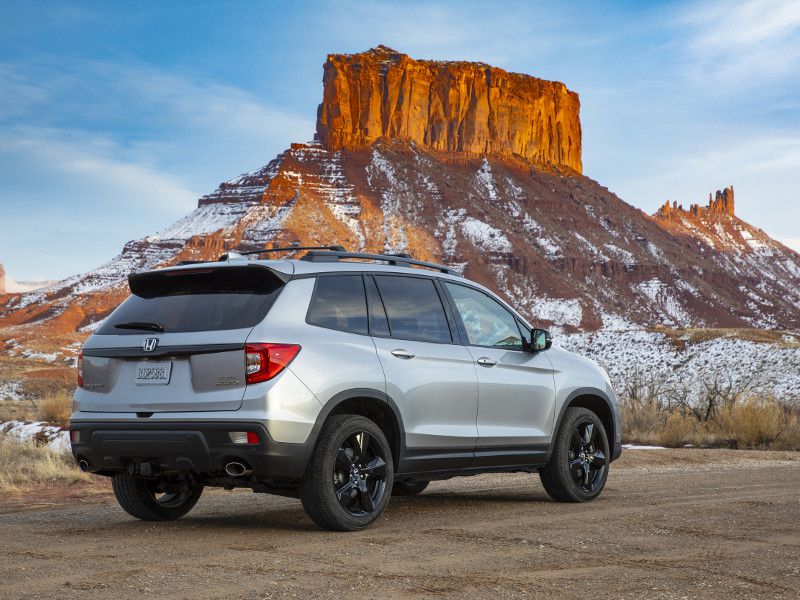
2019 Honda Passport rear view silver ・ Photo by Honda
Midsize SUVs with ample cargo space hit the sweet spot for a lot of customers. These vehicles give you more storage than their compact counterparts, and often more seating, too. Yet they’re also more efficient and easier to maneuver than full-size choices.
As far as their exact size goes, we consider midsize SUVs to be the ones between 190 and 200 inches in length. This does leave out options like the Chevy Traverse, but remember: The Traverse actually is a bit longer than the full-size body-on-frame Chevrolet Tahoe. Nor is that the only surprise that showed up in our research. It turns out that the top midsize SUV cargo-space leaders aren’t from any of the U.S. brands; but, they’re not necessarily the typical names from the imports, either. Read on to review our list of 10 midsize SUVs with the most cargo space.
2019 GMC Acadia
The 2019 GMC Acadia sets the baseline for our midsize suvs with the most cargo space. A three-row sport-utility, the Acadia provides 12.8 cubic feet of storage behind the third row, 41.7 cubic feet behind the second row, and 79 cubic feet in total.
GMC then offers Professional Grade features to help you make the most of that space, like a hands-free power tailgate, all-weather floor liners, and a variety of cargo-management tools. Just keep in mind that the compact 2019 GMC Terrain - with only two rows of seating - actually has a bit more cargo space than the Acadia. On the other hand, the bigger SUV also has additional benefits. These range from a standard mobile Wi-Fi hotspot to optional heated and ventilated leather seats.
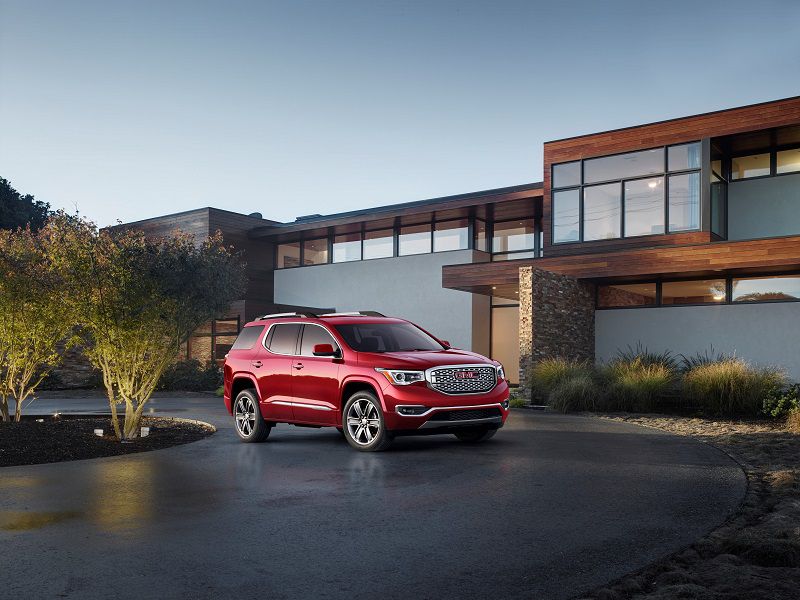
Photo by GMC
2019 Nissan Pathfinder
Working our way up the rankings of midsize SUVs with the most cargo space, we next come to the 2019 Nissan Pathfinder. It’s a bit bigger than the GMC Acadia in terms of both length and total cargo capacity. For the three-row Pathfinder, you get a maximum of 79.5 cubic feet of storage space with all seats folded, 47.4 cubic feet with just the third row folded, and 16.2 cubic feet when all rows are being used.
Nissan also serves up its own motion-activated tailgate, so you easily can access the rear cargo hold even with your hands full. As for driver-assistance technology, automatic forward emergency braking is standard, and that helps the Pathfinder earn a Top Safety Pick rating from the IIHS.
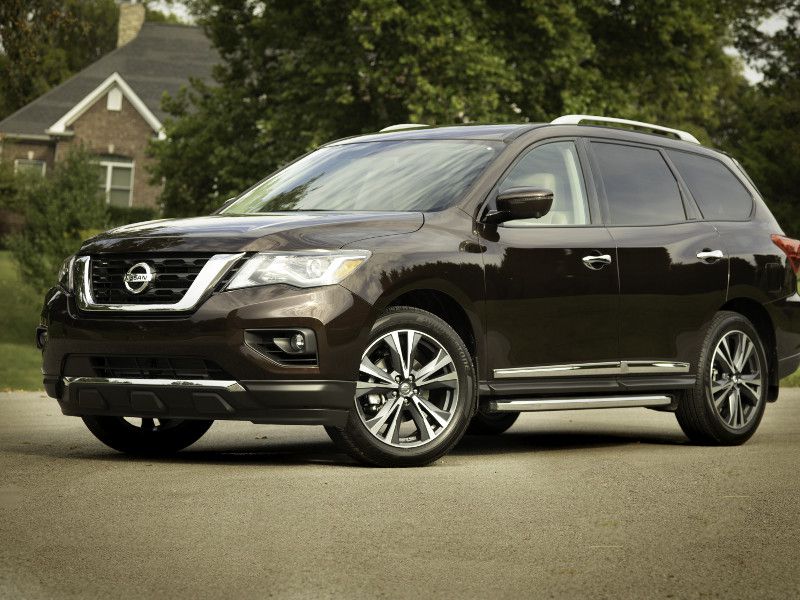
Photo by Nissan
2019 Hyundai Santa Fe XL
The midsize SUVs with most the cargo space also include the aptly named 2019 Hyundai Santa Fe XL. Hyundai’s biggest SUV for the 2019 model year, the three-row Santa Fe XL can be configured with 80 cubic feet of rear storage when the second and third rows are completely folded. Putting the second row into service leaves 40.9 cubic feet of cargo capacity, while that drops to 13.5 cubic feet when all seat backs are in their locked and upright positions.
The Santa Fe XL also matches many of its rivals with an optional hands-free liftgate for simplified access to the rear cargo area. For additional Hyundai highlights, Android Auto and Apple CarPlay are standard, and climate-controlled leather seats are optional.
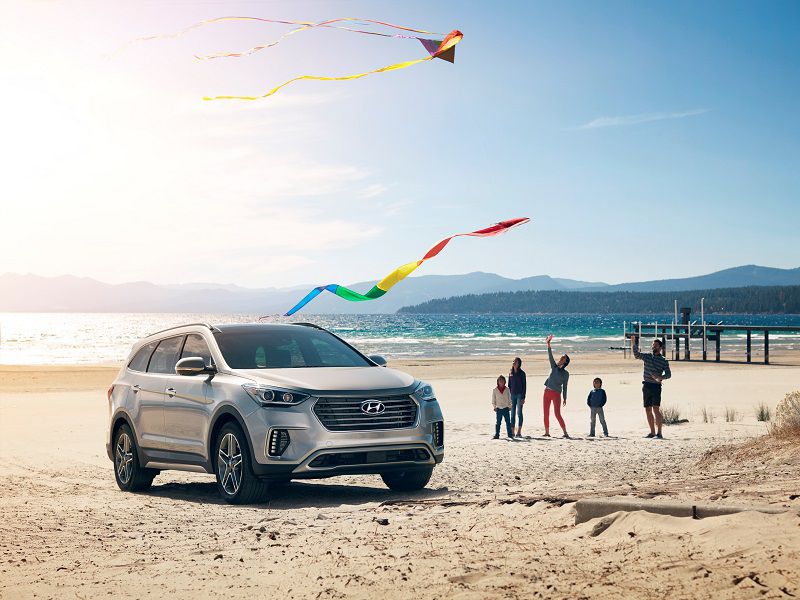
Photo by Hyundai
2019 Ford Explorer
The all-new 2020 model recently made its auto-show debut, but the 2019 Ford Explorer continues to be a good choice for shoppers. That’s partly because it’s among the midsize SUVs with the most cargo space. In fact, in its standard configuration, with all seats in use, the Explorer has a dedicated rear storage that allows for a generous 21 cubic feet of storage. You can increase cargo capacity to 43.9 cubic feet by folding the third row. Need more room? The Explorer can handle 81.7 cubic feet of cargo when you fold both back rows.
The Blue Oval’s biggest midsize SUV also ups the ante for ease of use: The Explorer offers both a hands-free tailgate and a power-folding third row.

Photo by Ford
2019 Toyota Highlander
As is the case with a number of Toyota products, the 2019 Highlander brings a special advantage to its segment. We’re talking, of course, about a hybrid powertrain. With that beneath the hood, the Highlander achieves EPA ratings of up to 30 mpg city/28 mpg highway/29 mpg combined, which leads our list of midsize SUVs with the most cargo space. However, the Highlander Hybrid doesn’t sacrifice any storage capacity to earn those grades.
Thanks to clever packaging, it has the same cargo ratings with any of its engines. This starts with 13.8 cubic feet of capacity behind the third row of seats, and a 42.7-cubic-foot space aft of the middle row. The Highlander’s maximum cargo capacity tops out at 83.7 cubic feet.
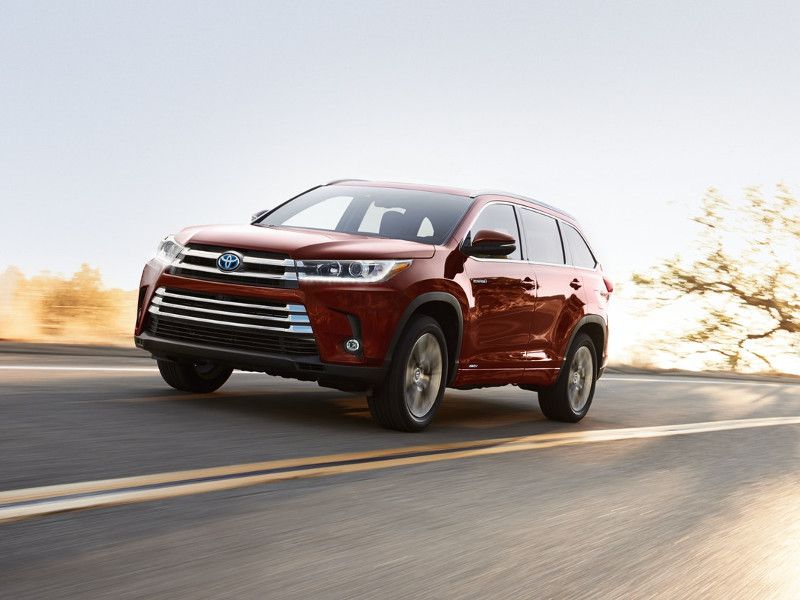
Photo by Toyota
2019 Honda Pilot
If you’re looking for the midsize SUVs with the most cargo space and the most standard safety technology, you should check out the 2019 Honda Pilot. The Pilot was refreshed for the new model year and welcomes the Honda Sensing package as standard equipment. That bundles automatic forward emergency braking, adaptive cruise control, forward-collision warning, and lane-keeping assistance.
What hasn’t changed are the Pilot’s relatively roomy cabin dimensions. Honda’s three-row SUV continues to provide up to 83.9 cubic feet of maximum cargo space. Fill the second and third rows with family and friends, and 16.5 cubic feet of storage still remains in place. You can pack the Pilot with 46.8 cubic feet of gear in the vehicle’s two-row/five-passenger layout.
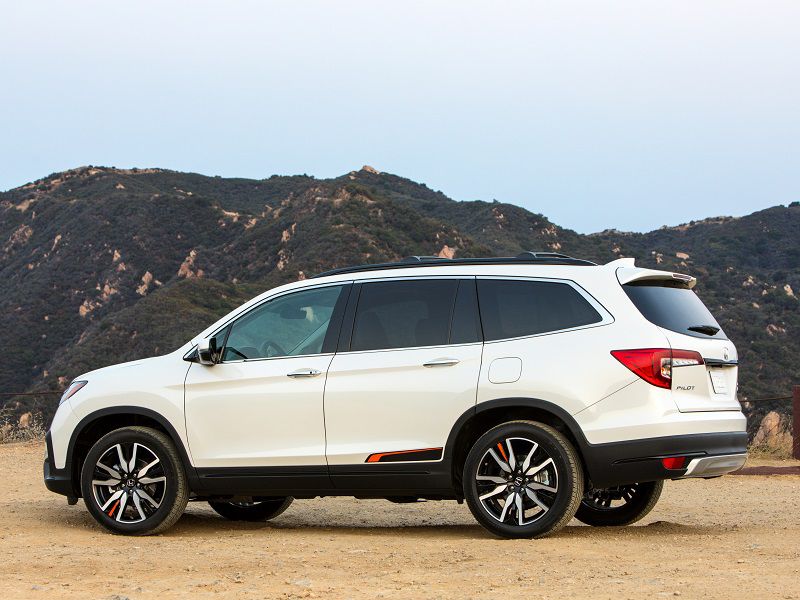
Photo by Honda
2019 Subaru Ascent
The largest Subaru ever is next in our gallery of midsize SUVs with the most cargo space. The 2019 Subaru Ascent is 196.8 inches long and boasts up to 86.5 cubic feet of storage. The Ascent also supplies 47.5 cubic feet of cargo room with passengers in the second row, and 17.8 cubic feet when both back rows are being used.
To take full advantage of that space, the Ascent is available with a Smart Rear View Mirror. It lets the rearview mirror act as a display for a rear-facing camera mounted outside of the vehicle. As a result, you get a clear view of what’s behind you, no matter how high cargo is stacked on the inside.
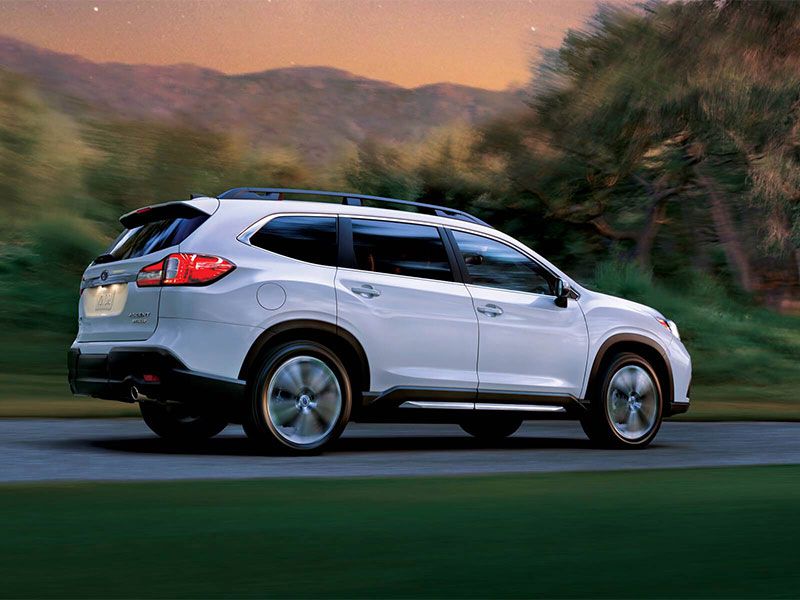
Photo by Subaru
2019 Volkswagen Atlas
The 2019 Volkswagen Atlas leads the three-row midsize SUVs with the most cargo space. And just to be clear, the Atlas doesn’t just offer the most overall storage capacity, with 96.8 cubic feet. VW’s three-row SUV also sets the pace with the most cargo room behind the second-row seats at 55.5 cubic feet. Moreover, only the Ford Explorer can beat the VW’s cargo capacity of 20.6 cubic feet when all seats are in play.
The Atlas builds on its functional benefits with technologies like Android Auto and Apple CarPlay, both of which are standard. Key Atlas options include automatic forward emergency braking, adaptive cruise control, a blind-spot monitor, and a Fender premium audio system.
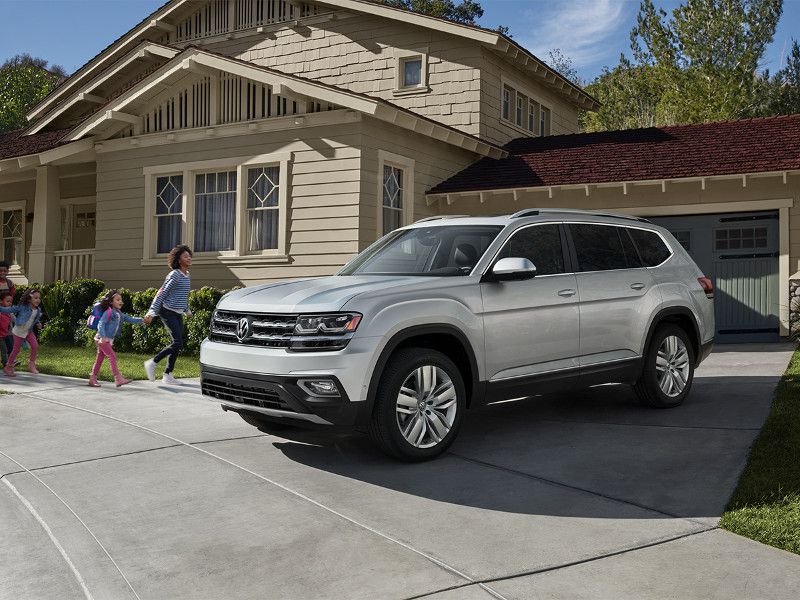
Photo by Volkswagen
2019 Ford Edge
At this stage, you may be wondering what’s left to cover after the VW Atlas, which topped all three-row midsize SUVs with the most cargo space. Well, there also are a growing number of brands with two-row midsize SUVs, like the 2019 Ford Edge. The Edge is on the short side compared to the three-row options, and we did have to round up to qualify the vehicle as 190 inches in length. But it still delivers more cargo capacity than two-row rivals including the Chevy Blazer, Nissan Murano, and Jeep Grand Cherokee.
To be specific, the Edge features 39.2 cubic feet of storage capacity behind the second row, and 73.4 cubic feet when the second-row seats are folded flat.
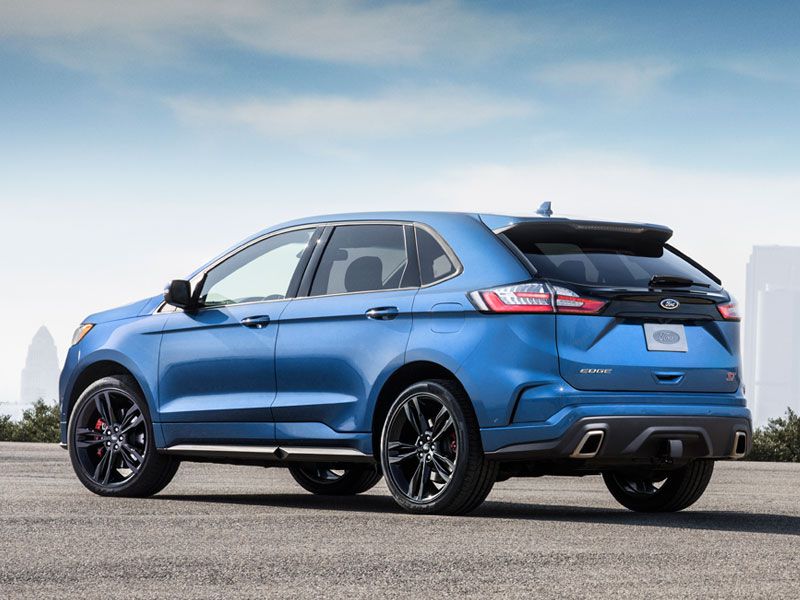
Photo by Ford
2019 Honda Passport
The all-new 2019 Honda Passport is No. 1 among the two-row midsize SUVs with the most cargo space. Indeed, the Passport has nearly the same total storage capacity (77.9 cubic feet) as the smallest of our three-row SUVs. According to Honda, it’s “enough to accommodate mountain bikes or a week’s worth of camping gear.” Put the rear seats in place and the Passport can deal with up to 41.2 cubic feet of cargo.
You also can enjoy plenty of cargo-carrying power. Compared to its smaller sibling, the compact Honda CR-V, the Passport rides with nearly 100 more horses - which makes sense when you realize the Passport shares the same 280-hp V6 as the larger Honda Pilot.
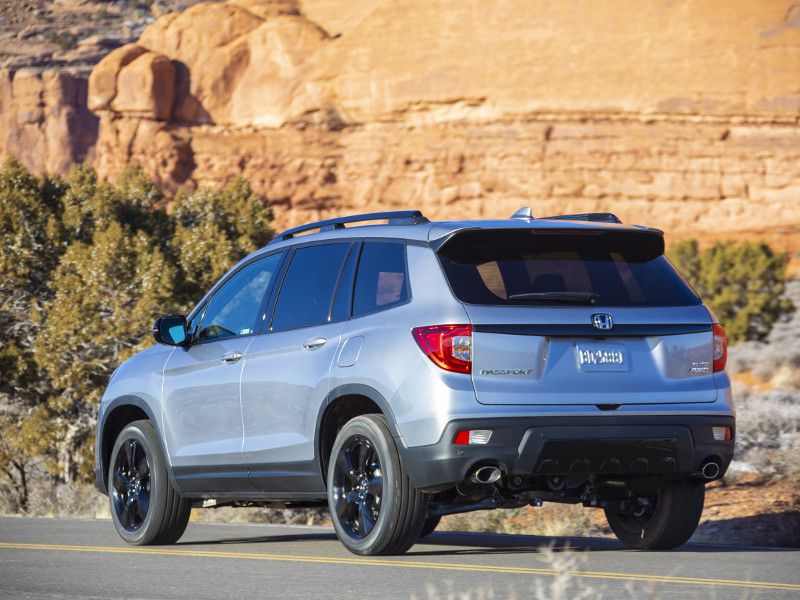
Photo by Honda